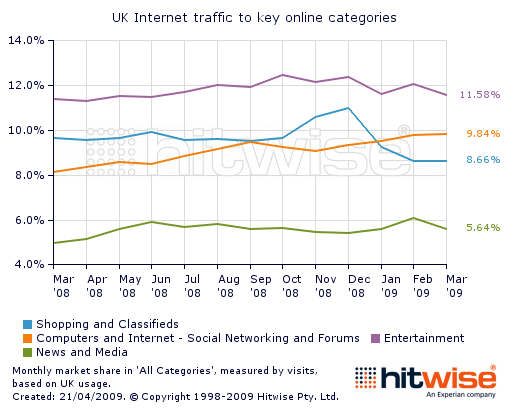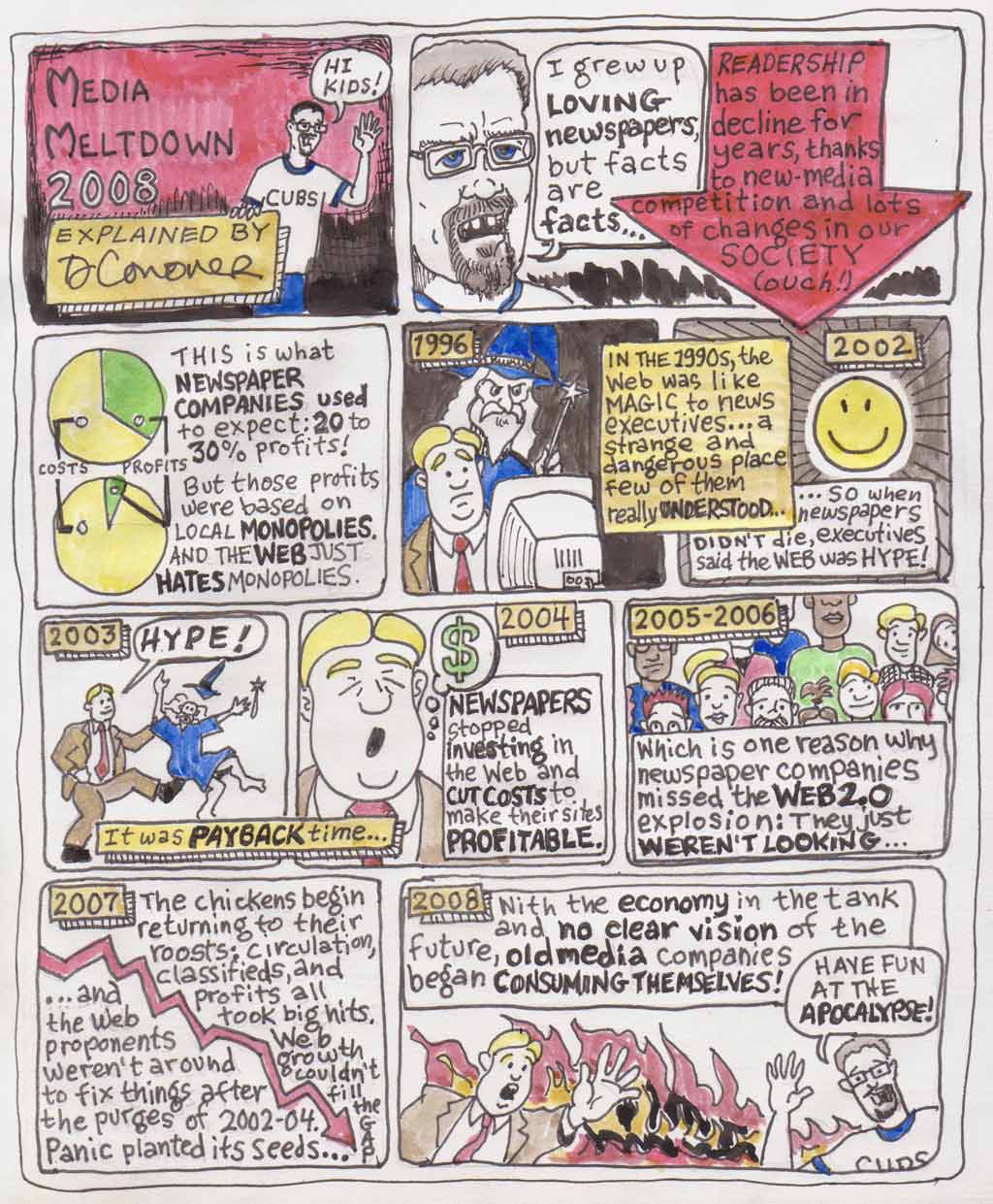UK: Internet users love browsing social media – less shopping
 A recent study by Hitwise reveales that UK Internet users are spending more time browsing online media than ‘going’ online shopping. In March 2009 9.8% of all UK Internet visits were directed to social networking websites and 8.6% to online retail websites. Compared to 2008, the figures turned around (online retailers 9.7% – social networks 8.2%).
A recent study by Hitwise reveales that UK Internet users are spending more time browsing online media than ‘going’ online shopping. In March 2009 9.8% of all UK Internet visits were directed to social networking websites and 8.6% to online retail websites. Compared to 2008, the figures turned around (online retailers 9.7% – social networks 8.2%).
In the passed year, online retailers sawe a downsize in traffic from paid search like sponsored or paid for links on search engines (i.e. like Google, Yahoo!, Live and Ask) – 2009: 8.9% and 2008: 10,1% of visits to online retailers came from a paid search listing.
“The growth of social networking, online video and the continuing popularity of news websites has meant that an increasing proportion of consumer’s online time in the UK has been devoted to online media,” commented Robin Goad, Hitwise’s Director of Research.
The traffic that Facebook, Twitter, MySpace, YouTube and the likes generates for online retailers increased in one year from 5.2% to 7.1%. And social networks now generate 58.3% more traffic than webmail providers (Hotmail, Yahoo! Mail and GoogleMail). The best performing categories in 2009 were Auctions, Fashion and Department Stores.
“Social networks are a relatively small but fast growing source of traffic for online retailers,” commented Goad. “At present, only a minority of retailers pick up a significant amount of traffic from social networks, but many of those that do have seen a positive impact on traffic. For example, fashion retailer ASOS has a strong presence on Facebook and in March received 13.3% of its traffic from the social network. Another example – in a very different market – is online bookseller Abebooks, which currently receives a quarter of all its UK Internet traffic from social networks, more than it gets from search engines.”
Spot On!
Is this showing a trend that people are willing to buy products in social networks? In the UK, it sounds possible. It could be the next step. We all know that the easy purchase process is a winner – for companies and customers. Thinking of the future of social networks, companies should consider engaging with customers much more on social networks while also integrating ‘light’ e-commerce opportunities in their Facebook Fan pages or in their company profiles at XING. Or at least indicate and lead the way for customers to some good offers or marketing activities. And re-thinking efforts on big spendings for paid search is definitely something that needs to be thought about…







